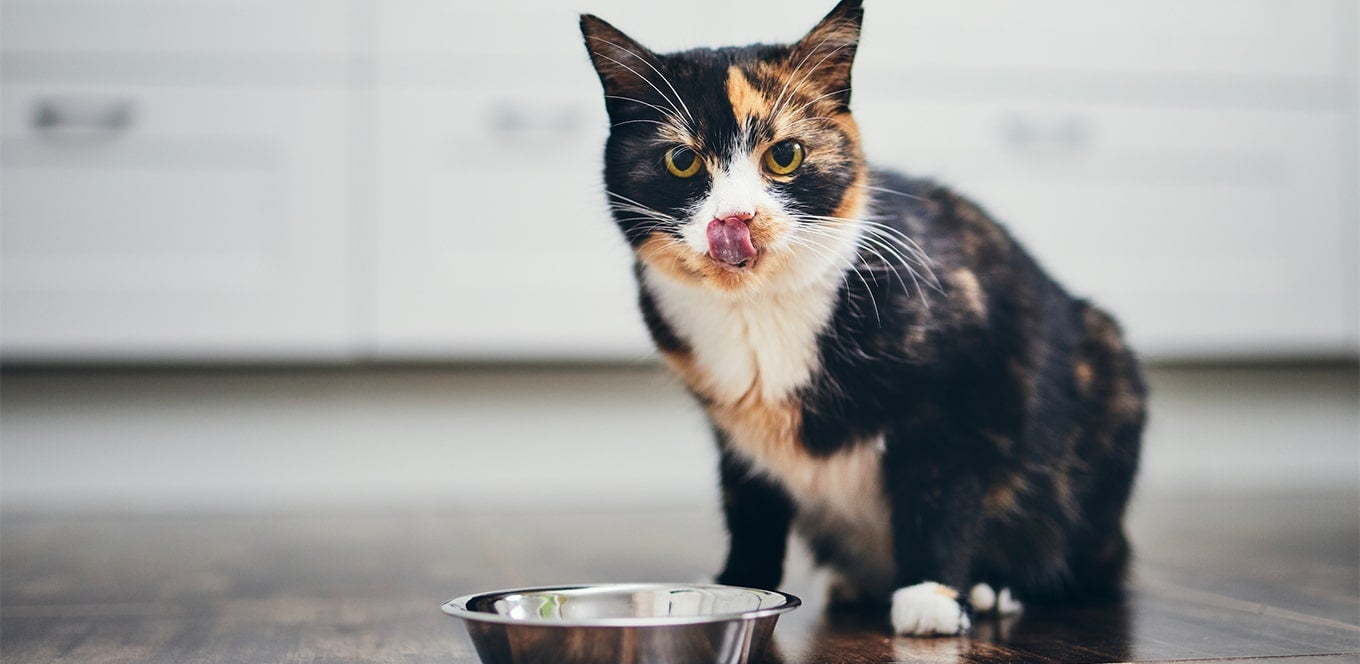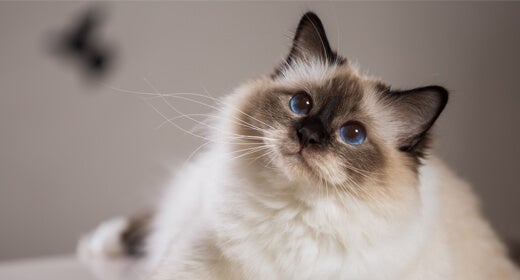

Knowing your cat needs a change in their diet is one thing, but knowing how to make that change is something else! Cats are creatures of habit, so it’s not uncommon for them to prefer their current food to anything new. Change disrupts their routine, which can impact their behavior and their digestion.
Thankfully, when the time has come to change your cat’s diet, a little planning and preparation goes a long way toward making the transition easier for them (and for you).
The following tips will help you change your cat’s diet and successfully transition your cat to a new food:
There are lots of reasons to consider changing your cat’s food — maybe you have a new kitten to wean, a kitten who’s all grown up now or an adult cat entering their senior years. In addition to normal aging, advice from the vet is a common reason to change what you’re feeding your cat. Cats that need help reducing their weight or managing excessive hairballs might need the support of a new food designed with those needs in mind. Whatever your reason for changing your cat’s diet, make sure the new food will suit their needs. That way you only have to make the transition once, and can avoid upsetting their stomach by changing the routine too often.
Going slow is paws down the most successful way to ease your cat into a different diet. Start by mixing 25% new food with 75% familiar food. Slowly change the proportions over the next three days or so by gradually increasing the amount of new food and decreasing the amount of their familiar food. Think of it as a kind of weaning — at the end of this process, you should be feeding (and your cat should be eating) just the new food.
Your cat may choose to eat only the familiar food, or not eat at all … at first. But a healthy cat can miss meals for a day or two without causing health problems. Slow, steady and consistent wins this race!
How would you feel if someone tried to force you to eat strange food you didn’t want?
Aggressively dumping the new food into your cat’s dish and declaring that your cat had better eat it might inspire your cat to do anything besides eat!
A little gentleness in your approach goes a long way. Try using a pleasant tone of voice and encouraging your cat to taste the new food. Even if they don’t go for it at first, a gentle approach still goes over much better than an aggressive one.
Cats train us as much as we train them. Giving in to their demands reinforces that their refusal to eat the new food is acceptable, which makes transitioning to the new diet even more challenging in the long run.
So don’t give up! Don’t be tempted to revert back to your cat’s familiar foods, and don’t give your cat treats or table scraps during the initial three-day period.
This is the toughest dietary transition of them all, but there are a few ways to make the process easier. If your cat resists eating dry food for more than a few meals, try mixing a little warm water with it and maybe even warming the moistened food in the microwave for a few seconds.
If you mix dry food with water, remember to discard any uneaten leftovers after 20 minutes to prevent spoilage. (The same rule applies for wet food.) After your cat is used to the moistened dry food, you can gradually transition to serving the same food dry.
Changing your cat’s diet is sometimes necessary to help them live a happy, healthy life. The process of switching what, how or how often you feed your cat can be a little bumpy, but you can do it! By going slowly, staying patient and encouraging, sticking to the plan and making the transition as easy as possible, you’ll be giving your cat what they need and helping them adjust as comfortably as possible.


Your cat’s skin and coat help keep viruses and bacteria from entering the body and prevent water and heat from leaving it. And because nutrients such as protein, fat, vitamins and minerals play crucial roles in your cat’s skin and coat health, it’s important to make sure your cat is receiving the right types and amounts. IAMS™ cat foods are designed to provide your cat with the nutrition they need to support their skin and coat health.
Without Proper Nutrition
With Proper Nutrition
Your cat’s hair coat is composed almost entirely of protein. If your cat’s diet doesn’t contain enough quality protein, her hair may fall out or become dry, weak and brittle.
But not all proteins are alike. Proteins are found in both animal- and plant-based ingredients. Animal-based proteins contain all of the essential amino acids cats need, while plant-based proteins may contain only some. Cats need the nutrients in animal-based protein sources for the best health.
Fats also can be found in both animal- and plant-based ingredients, and are incorporated into skin cells as fatty acids. Three fatty acids help maintain your cat’s skin and coat condition:
Without these fatty acids, cats may experience a dull, dry coat, hair loss and greasy skin.
To promote your cat’s skin health and elasticity, make sure to provide clean, fresh water at all times.
Most cat foods contain more than the required amount of linoleic acid, an omega-6 fatty acid. However, IAMS research shows that it is not just the amount, but the ratio of omega-6 to omega-3 fatty acids that is most beneficial to cats.
The optimal omega-6 to omega-3 fatty acid ratio to maintain a healthy skin and coat in cats is between 5:1 and 10:1. In other words, five to 10 omega-6 fatty acids should be present for every one omega-3 fatty acid.
Vitamins and minerals are essential for the development of healthy skin and coat. The best way to provide them is through a complete and balanced diet rather than through supplements.
| Vitamin or Mineral | Role in Skin and Coat Health |
| Vitamin A | Necessary for growth and repair of skin |
| Vitamin E | An antioxidant that helps maintain the health of skin cells |
| Vitamin C | An antioxidant that helps maintain the health of skin cells |
| Biotin | Aids in the utilization of protein |
| Riboflavin (B2) | Necessary for fat and protein metabolism |
| Zinc | Necessary for fat and protein metabolism |
| Copper | Involved in tissue, pigment, and protein synthesis |
The protein, fatty acids, vitamins and minerals in your cat’s food all play a vital role in your cat’s skin condition and coat health. While other factors, including the season and your cat’s age, can also affect the health of your cat’s hair and skin, optimal nutrition can help support a shiny coat and healthy skin.